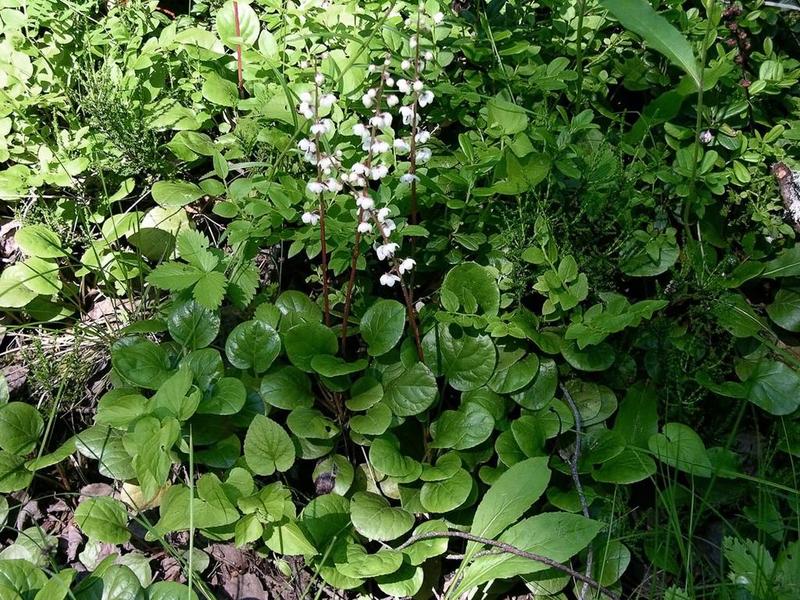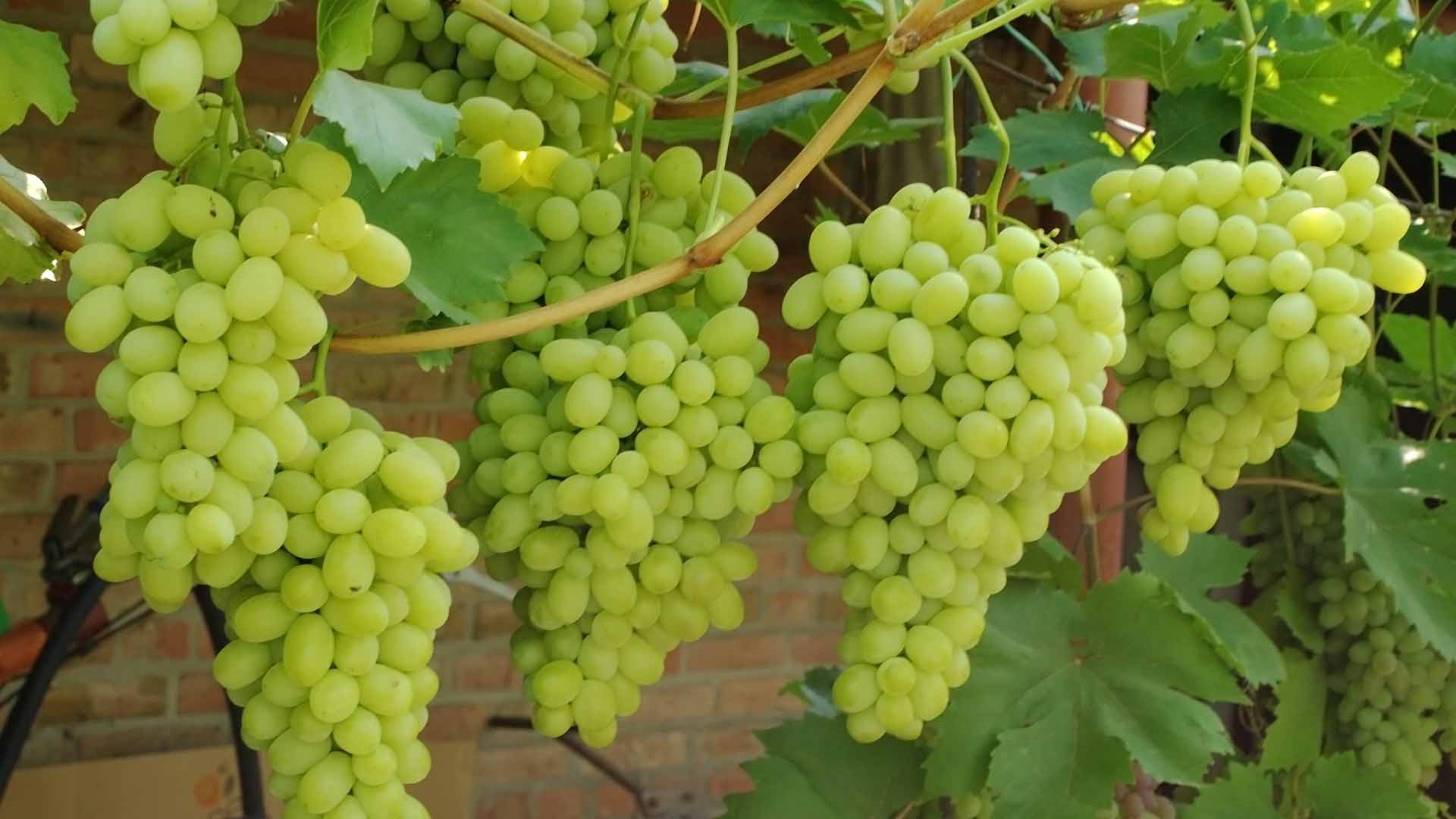The onset of spring brings not only a good mood, but also the sun, which shines and the first flowers. When spring is already fully in possession, then lilies of the valley appear. Now on any site you can find what a lily of the valley looks like. It is not only perfect for its appearance, but with a smell that resembles spring and even it can suddenly make your head spin.
Description of lily of the valley flower
 Lily of the valley, called Convallaria majalis, is a herbaceous plant. This is primarily determined by its structure. Stems (soft, hardy). They die off as soon as the flower stops blooming.
Lily of the valley, called Convallaria majalis, is a herbaceous plant. This is primarily determined by its structure. Stems (soft, hardy). They die off as soon as the flower stops blooming.
Bells. They have a specific, but very fragrant smell. Usually on one stem, they can be counted from 6 to 20 pieces. Color can be or white or white-pink.
Lilies of the valley can be found in woodlands. But if you look at its appearance, for example, in the photo, it always seems that this flower is delicate, defenseless, and requires constant care. But this is not the case.
Lily of the valley - very strong flower, which easily takes root, multiplies quickly, and even captures the territory for its reproduction. Temperature drops also do not scare him.
Recently, new types of lily of the valley have appeared, where the bells can have a purple-red color or the flowers are similar to double ones. But so far we see such flowers only in the photo. There is another modern look: it has leaves painted with yellow stripes.
Lily of the valley begins to bloom in May, and this flowering lasts about 20-25 days. When the flowers have already faded, then on the stem tiny berries will appear, which later, in the fall, will turn red. Rodents and birds adore these berries, considering them as a kind of delicacy.
On any flower bed, the lily of the valley will look very beautiful even without flowering, since the leaves of this floral plant large and beautiful... This can be seen if you consider the lily of the valley flower in the photo. In general, the leaves of the lily of the valley are somewhat reminiscent of the ears of a fallow deer, hence the people got their other name "landushka".
Varieties of lily of the valley
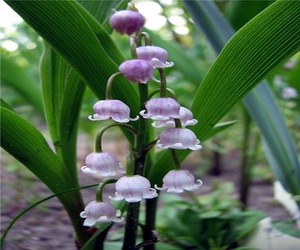 If you turn to botanists for help, they will say in the affirmative that so far only one species of lily of the valley has been bred. And all those flowers that can be seen, for example, in the photo, are just its diversity.
If you turn to botanists for help, they will say in the affirmative that so far only one species of lily of the valley has been bred. And all those flowers that can be seen, for example, in the photo, are just its diversity.
But such subspecies are undoubtedly differ in different characteristics: leaf shape, color and even bell size.
The following types of lilies of the valley are considered to be the most common in Russia:
- May.
- Transcaucasian.
- Keiskei.
- Silver.
- Pink.
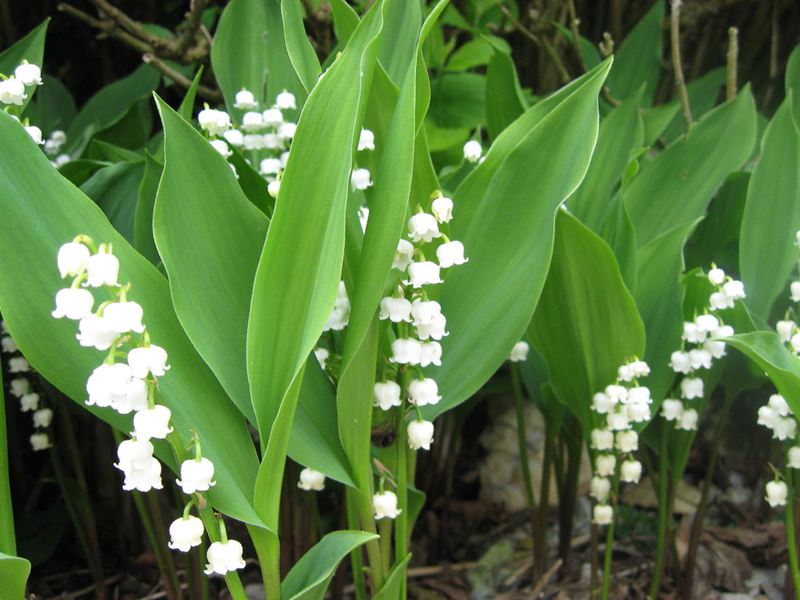
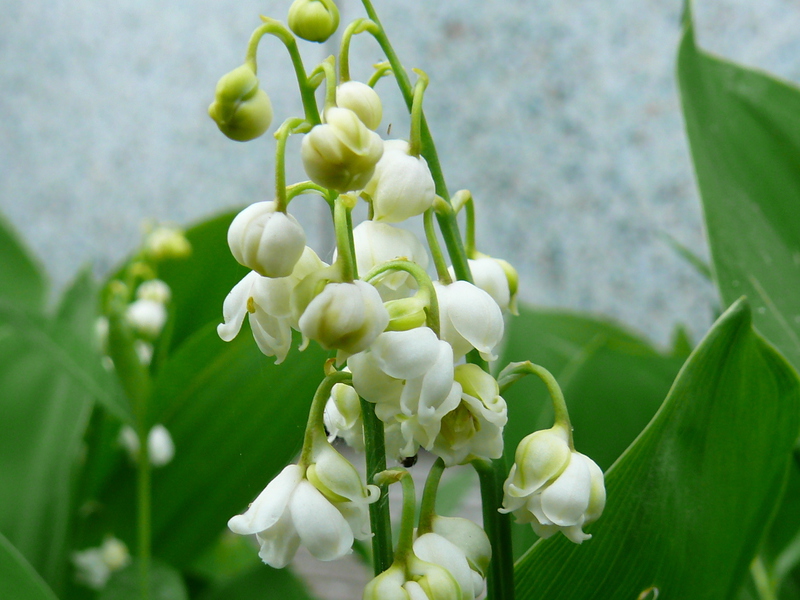
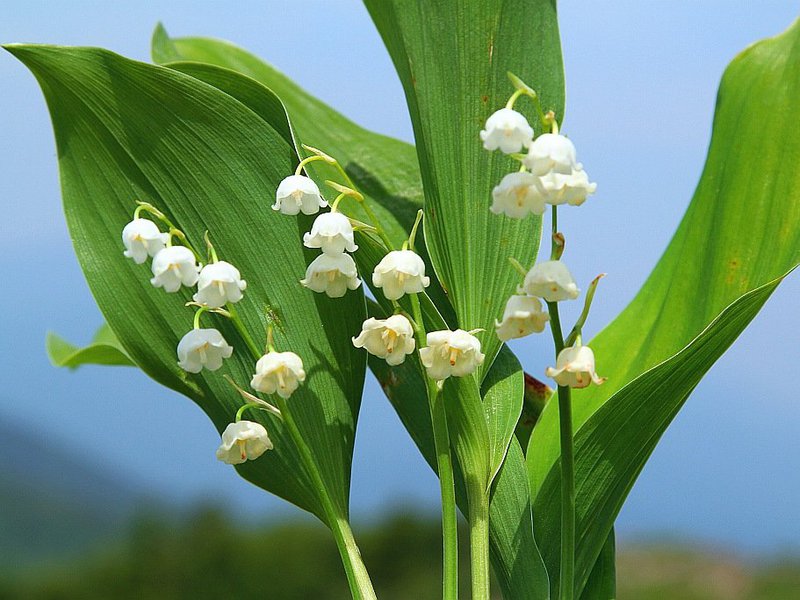
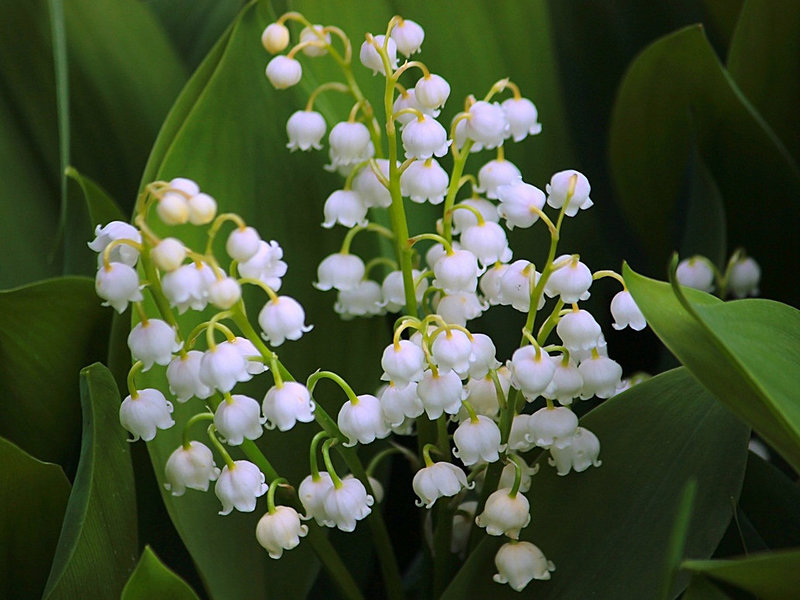
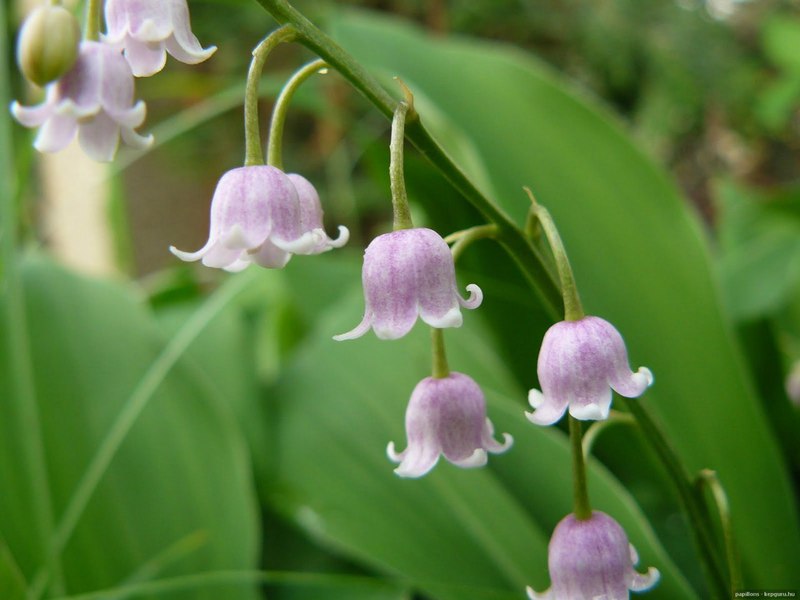
All these species are active used in medicine for the treatment of many diseases. So, May lily of the valley was bred in the 18th century, and almost immediately its description appeared in magazines.
And then in 1737 he received such a name. The name of the flower comes from the Latin language and literally means "lily of the valleys".
Unfortunately, today this subspecies of lily of the valley is considered very rare and even listed in the Red Book... There is a belief that where such a flower settles, it quickly occupies the entire territory, but if you just pick at least one of them, the whole blooming area immediately dies.
The thing is that the forests are getting smaller and the lily of the valley somehow disappears by itself.But people are losing such beauty! To be convinced of this, it is enough to look at photos of lily of the valley flowers, which usually adorn many sites on the Internet.
But not only deforestation has led to such a state of the lily of the valley in our country. This, of course, is the result of the fact that a person collected it for a very long time as medicinal plants, but at the same time did not give anything in return (planting, care).
Lilies of the valley in personal plots and flower beds
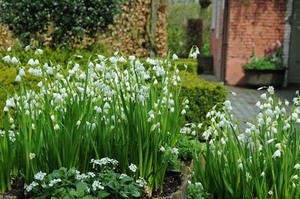 It is very easy to grow a white lily of the valley in a flower bed or in flower beds, because it does not require any special care. Just for the beginning, so that the flower "takes root" you need to choose a placethat suits him perfectly.
It is very easy to grow a white lily of the valley in a flower bed or in flower beds, because it does not require any special care. Just for the beginning, so that the flower "takes root" you need to choose a placethat suits him perfectly.
For example, one that will be hidden from the sun is best chosen somewhere under the trees. If the landing is successful, and the place matches the conditions of the lily of the valley, then it will delight its owners with beauty and aroma for a very long time.
If the place where it is planted is in the shade and cool, then it will bloom for almost five weeks. In this case, all the roots of a beautiful and fragrant flower plant usually grow together and begin to creep further, occupying the territory that is nearby.
Very often lilies of the valley are used to harmoniously arrange flower bedsmixing with other plants.
How to grow lily of the valley
 There are rules for both care and growing lily of the valley. It is known that this flower plant lives in one place for about 10 years. But for this it is worth taking care of the place itself so that it is cool, and the soil is rich in organic matter.
There are rules for both care and growing lily of the valley. It is known that this flower plant lives in one place for about 10 years. But for this it is worth taking care of the place itself so that it is cool, and the soil is rich in organic matter.
Before planting lilies of the valley, it is necessary to prepare the ground... And for this you need to do the following:
- dig up the ground (about 25 cm);
- fertilize with manure, but not fresh, but such that it has already rotted (manure can be replaced with peat-distilled compost).
Autumn or early spring is considered a good time to plant such a plant. As soon as the flower is in the ground, then it follows water hard until it is accepted.
Now a few words about the reproduction of a fragrant plant. There are two ways to breed lily of the valley:
- Seeds.
- Rhizome (division).
If the flower propagates with the help of the rhizome, then it stands from the roots cut off small pieces 6-8 cm. But you need to choose those where there are kidneys that will rush up.
When such roots sink into the ground, then it is worth making sure that they do not bend. You should also look so that the sprouts are on the surface, and the distance between them is at least 8 cm.
When propagating by seeds, you should know that no harvest should be expected in the first year. This time the plant should spend on taking deeper roots into the ground. But in the second spring, leaves will appear, but only they will not open, but will be tightly pulled together.
And the more the lily of the valley rises, the more these leaves will open. The more the first leaf is opened, the faster the second will appear.
At the same time, in the second spring, the rhizome begins to grow, becoming more and more thick and occupying more and more territory.
Healing properties
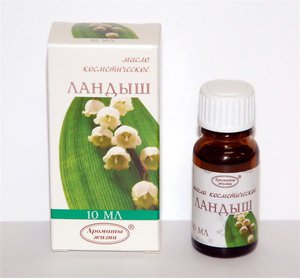 It is always worth remembering that lilies of the valley are great medicine, but only in reasonable hands. If a person does not know how to handle this plant, then he immediately turns into a poisonous drug.
It is always worth remembering that lilies of the valley are great medicine, but only in reasonable hands. If a person does not know how to handle this plant, then he immediately turns into a poisonous drug.
Before using this excellent remedy for treatment, it is necessary to study what healing properties it has.
It is known that this plant began to be used for medicinal purposes as early as 1861. The first doctor who used it was S.P.Botkin. The plant contains glucose, as well as cardiac glycosides.
For the treatment of what diseases can this flower plant be used? In the first place will be the following diseases:
- Nervous system.
- Arrhythmia.
- Cardiovascular diseases.
- Fever.
- Elimination of physical stress.
- Rheumatism.
- Headache.
- Dropsy.
- Epilepsy.
If it is wrong to use decoctions, infusions and medicines from this plant, then the body will not be helped, but great harm done... If a person has kidney disease, stomach problems, or liver disease, then medicines based on such a plant are strictly prohibited.
Lily of the Valley is a beautiful-looking, fragrant plant that is delicious will decorate any flower bed or another area. But, having many medicinal properties, this plant can be poisonous to humans.
Therefore, you should never abuse drugs based on it, or use it yourself, without a doctor's prescription. And one more thing: always, when caring for lilies of the valley, do not forget about safety measures and always wash your hands thoroughly!

